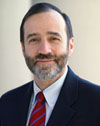The November 2009 recommendation of the US Preventive Services Task Force (USPSTF) against mammography screening for breast cancer in women 40 to 50 years of age1-3 is a good example of the damage caused by a radical, imprudent, and sudden change in strategy for disease screening. Before I tell you why I think so, let me briefly put screening in the context of the relationship we physicians have with our patients.
Clinicians work, and continuously develop their skills, in a complex network of relationships with patients and colleagues—all committed to quality health care. Scientific evidence drives our medical recommendations and suggestions; scientific evidence is modulated and influenced by the individual patient’s health needs and our professional judgment.
Screening for major diseases is built on effective patient education and standardized protocols developed by our professional societies. Radical, sudden changes in our approach to screening can weaken the trust we’ve built with our patients and, inadvertently, cause more harm than good. That breach of trust is just one of the dangers posed by the new USPSTF mammography screening guidelines.
Balancing the three-legged stool: Benefit, cost, risk
Even though the USPSTF has recommended against routine mammography screening for women 40 to 49 years old, it notes that screening mammography in that age range does save lives. Doesn’t the task force seem to be talking out of both sides of its mouth?
In fact, the task force arrived at its recommendation by overemphasizing the risks and costs associated with mammography including:
- anxiety over false-positive results
- the inconvenience and discomfort of follow-up imaging study and biopsy
- the possibility of overtreating lesions that have low potential for major morbidity or death
- undervaluing the life of each young woman and mother whose life is saved by mammography.
The task force estimated that, among women in their 40s, one life is saved for every 1,900 women who undergo screening mammography. My question is: Who has the moral, scientific, or judicial authority to conclude that the anxiety produced by mammography is more important than preventing the unnecessary death of one young mother? I do not think that a body appointed by the government should have final decision-making authority over such a complex question.
What a single letter will mean for many women
The USPSTF assigned a “C” grade to screening mammography. This signifies that 1) the task force recommends against this service and 2) there is high certainty that the benefits of the service are small (implying low cost-effectiveness).
The impact of the “C” designation is powerful: Written rules of many health-care insurers preclude them from providing reimbursement for preventive services rated “C” by the USPSTF. The task force’s imprudent decision therefore means that many women will be cut off from access to screening mammography during their 40s—an unfortunate outcome.
In the absence of strong new evidence,
let’s embrace evolution, not revolution
Experts should be cautious about changing long-standing recommendations and practices unless they are acting on new data of very high quality. Science should drive our clinical recommendations; we should practice evidence-based medicine.
Experts in evidence-based medicine have reflected deeply on two key problems of evidence-based medicine:
- “How strong is the evidence?”
- “Is the evidence sufficiently strong for a recommendation that, in almost all situations, the recommendation trumps all unique patient issues, such as personal preferences and unique medical issues?”4
Given the long-standing recommendation that screening mammography be offered to women beginning at 40 years old, only very strong new data should halt current practice. The USPSTF recommendation is not credible from the perspective of many women: namely, that an annual mammogram beginning at 40 years provides far more benefit than risk.
Trust—at the heart of health care
A high level of trust, and coordinated decision-making among patients, physicians, nurses, and administrators, advances the quality of health care. Whom do you trust to make clinical recommendations that best balance benefit, cost, and risk? I deeply trust well-trained clinicians and highly motivated patients who are working in a collaborative relationship to make the best decisions about care.
Across many centuries, the patient–physician relationship has been the foundation of health care. But as our civilization grows more complex, other entities increasingly intervene to exert influence over that relationship: professional societies (ACOG, the American College of Radiology), disease-focused organizations (such as the American Cancer Society), insurance companies, government agencies, and the legal profession. To amplify my perspective on trust: It’s our professional societies and disease-focused organizations that I trust to make recommendations that, to the best extent possible, balance those three factors that often exist in tension: benefit, risk, cost.


